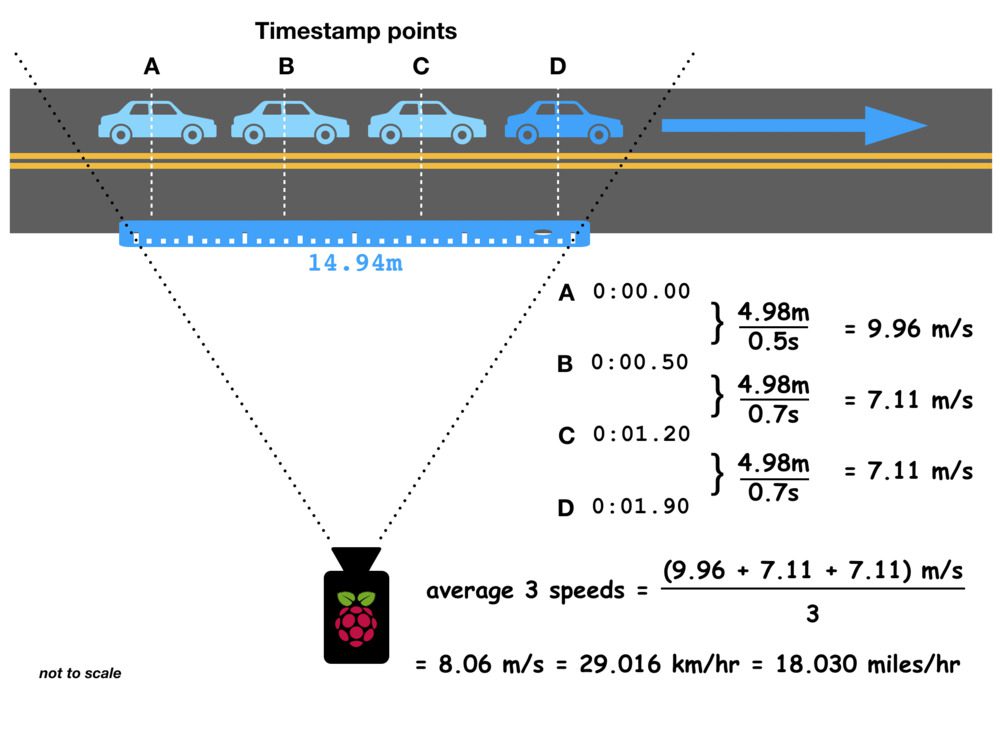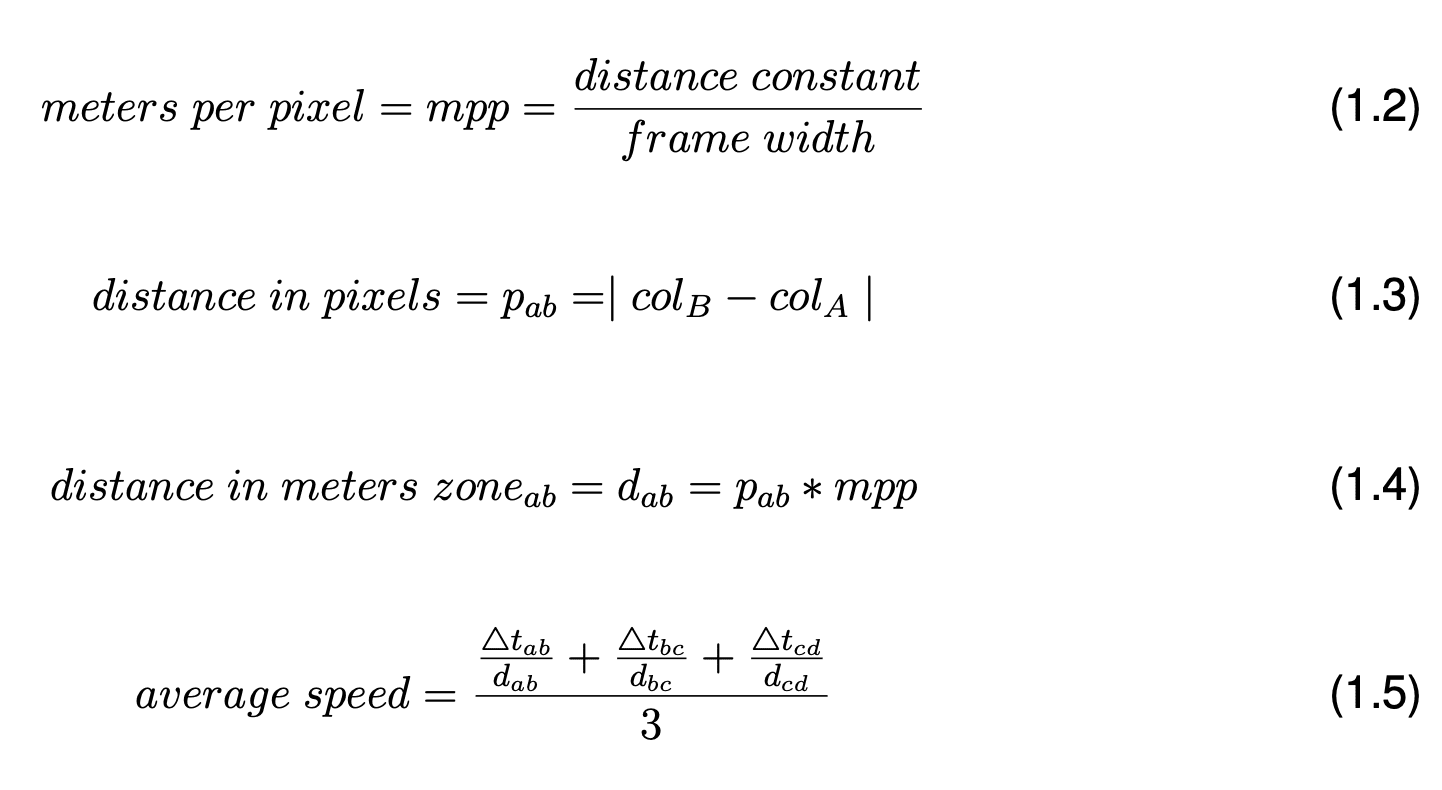Police can estimate the speed of a vehicle by using various methods and observations.
Understanding Police Estimate Of Vehicle Speed
When it comes to enforcing traffic laws and determining whether a vehicle was speeding, one of the techniques that police officers rely on is visual estimation of speed. This method allows them to make an informed judgment about how fast a vehicle is moving, even without the use of radar or other speed measurement devices. Understanding how police estimate the speed of a vehicle can provide valuable insight into the enforcement of traffic regulations.
Challenges In Accurately Estimating Vehicle Speed
Estimating the speed of a vehicle based on visual observation alone poses several challenges for police officers. These challenges include:
- Distance: Accurately judging the distance between the observer and the vehicle can be difficult, especially in situations where there are no reference points or landmarks nearby.
- Angle of Observation: The angle at which the vehicle is being observed can affect the perception of its speed. For example, a vehicle moving directly toward the observer may appear faster than a vehicle moving parallel to their line of sight.
- Environmental Factors: Various environmental factors, such as weather conditions, visibility, and lighting, can affect the accuracy of speed estimation. Poor weather conditions or low visibility may make it more challenging for an officer to accurately gauge the vehicle’s speed.
Factors Affecting Visual Estimation Of Speed
Several factors can influence the accuracy of visual estimation of speed by police officers. These factors include:
- Size and Type of Vehicle: The size and type of vehicle can affect the perceived speed. Larger vehicles may appear slower than smaller vehicles moving at the same speed.
- Contextual Cues: Contextual cues, such as surrounding traffic, road conditions, and the presence of pedestrians, can provide additional information that helps officers estimate vehicle speed.
- Experience and Training: An officer’s experience and training in estimating vehicle speed can significantly impact the accuracy of their estimations. Well-trained officers with extensive experience in traffic enforcement may be more adept at accurately gauging vehicle speed.
In conclusion, understanding how police estimate the speed of a vehicle is crucial in comprehending traffic law enforcement. Despite the inherent challenges and various factors that can affect the accuracy of visual estimation, well-trained police officers rely on their observations to make informed judgments about vehicle speed. Their expertise in this area plays a vital role in promoting road safety and enforcing traffic regulations.

Credit: pyimagesearch.com
Tools And Techniques For Estimating Vehicle Speed
When it comes to enforcing traffic laws and ensuring road safety, police officers need effective tools and techniques to estimate the speed of vehicles accurately. By understanding the speed at which a vehicle is traveling, law enforcement can take appropriate measures to enforce speed limits and prevent accidents. Let’s explore some of the key tools and techniques used by police officers to estimate vehicle speed.
Use Of Speedometers And Odometers
A speedometer is an essential instrument found on every vehicle. It measures the instantaneous speed of the vehicle, displaying it on the dashboard for the driver to see. However, police officers can also use speedometers to estimate the speed of other vehicles on the road. By matching their speed to that of the target vehicle, police officers can reasonably estimate its speed.
An odometer, on the other hand, measures the distance covered by a vehicle. Police officers can use the odometer to determine the time it takes for a vehicle to cover a certain distance. By calculating the average speed using the distance and time, officers can estimate the vehicle’s speed.
Lidar For Laser Speed Measurement
LIDAR (Light Detection and Ranging) is another tool commonly used by police officers for precise laser speed measurement. This technology utilizes laser beams to determine the speed of a moving vehicle. A laser beam is directed towards the target vehicle, and the LIDAR device measures the time it takes for the laser beam to bounce back. Based on the time it takes and the known speed of light, the LIDAR device calculates the speed of the vehicle.
LIDAR offers several advantages, including its accuracy and ability to differentiate between multiple vehicles. It can effectively measure the speed of a specific vehicle in heavy traffic and is often used in situations where a high degree of precision is required.
Conclusion
By utilizing tools such as speedometers, odometers, and LIDAR devices, police officers can estimate the speed of a vehicle with a reasonable level of accuracy. This information allows them to enforce speed limits and take appropriate action to ensure the safety of both drivers and pedestrians on the road.
Legal Implications Of Police Speed Estimates
When it comes to the legal implications of police speed estimates, it’s crucial to understand the burden of proof in prosecution, as well as the methods such as pacing and speed violation tickets used by law enforcement.
Prosecution Burden Of Proof
In legal proceedings involving speeding violations, the burden of proof lies with the prosecution. Prosecutors must demonstrate beyond a reasonable doubt that the driver was exceeding the speed limit based on the observations made by the police officer. This places a significant responsibility on law enforcement to accurately and reliably estimate the speed of a vehicle. Their testimony and supporting evidence must withstand scrutiny in court to secure a conviction.
Pacing And Speed Violation Tickets
Pacing is a widely used method for police to estimate the speed of a vehicle. It involves a law enforcement officer matching the speed of their vehicle to the target vehicle and maintaining a constant distance between them. The officer then notes their speed to determine the speed of the target vehicle. This method, when conducted correctly, is considered a valid and effective means of speed estimation.
The issuance of speed violation tickets based on police speed estimates is common. Law enforcement officers rely on their visual estimation, supported by training and experience, to determine if a vehicle is violating speed limits. This can lead to penalties for drivers if the officer’s judgement is accepted as accurate in court.
Accuracy And Limitations Of Police Speed Estimates
Enhancing Vehicle Speed Measurement Methods
- New technologies like LIDAR enhance speed measurement accuracy.
- GPS integration enables real-time speed tracking for police vehicles.
- Specialized training programs ensure officers are skilled in speed estimation.
- Standardized procedures promote accuracy and consistency in speed measurements.
Credit: trafficlawguys.com

Credit: pyimagesearch.com
Frequently Asked Questions Of Police Can Estimate The Speed Of A Vehicle
What Is Used To Measure The Speed Of A Vehicle?
A speedometer is used to measure the speed of a vehicle. It provides the instantaneous speed, while an odometer measures the distance covered.
What Was The Approximate Speed Of A Vehicle That Left Skid Marks Measuring 150 Feet?
The approximate speed of the vehicle that left skid marks measuring 150 feet can be estimated by the police.
How Do Police Visually Estimate Vehicle Speed?
Police use experience and perception to gauge vehicle speed accurately.
Can Police Estimate Your Speed Without Equipment?
Yes, police can estimate speed based on visual observation and experience.
Conclusion
In response to the question, “How do police estimate the speed of a vehicle? ” We have explored various methods and factors that go into this process. Whether it’s visual estimation, the use of technology like LIDAR, or analyzing skid marks in accidents, law enforcement officers are trained to make accurate speed assessments.
With this knowledge, we can better understand the techniques used by police to enforce road safety.
